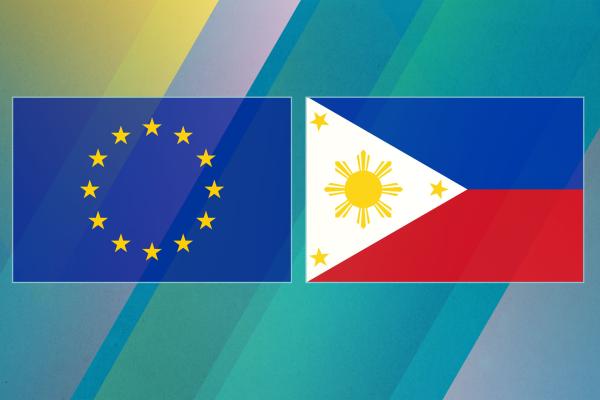- Country or region
- Philippines
- Trade topics
- Negotiations and agreements
- Trade policy
Negotiations for an EU-Philippines trade and investment agreement were launched on 22 December 2015. The second round of negotiations between the EU and the Philippines took place in February 2017, but the talks were then put on hold. In July 2023, the EU and the Philippines announced their intention to begin an extensive technical stocktaking exercise with a view to assess if conditions were right for potentially resuming negotiations on a free trade agreement (FTA).
The EU and the Philippines announced the resumption of negotiations for a comprehensive and modern FTA in March 2024.
The Philippines is a member of the WTO since 1995.
Trade picture
-
Trade in goods between the two partners amounted to €18.4 billion in 2022, while bilateral trade in services between the EU and the Philippines reached €4.7 billion in 2021.
-
The EU's foreign direct investment stock in the Philippines reached €13.7 billion in the same year.
-
In 2021, the EU was the Philippines’ fourth-largest trading partner, accounting for 7.9% of the country’s total trade (after China, Japan and the United States). The Philippines was the EU's 39th largest trading partner globally, accounting for 0.4% of the EU’s total trade.
-
EU exports to the Philippines are dominated by machinery, transport equipment, chemicals, and food products, while the Philippines' main exports to the EU are office and telecommunications equipment, machinery, food products, and optical and photographic instruments.
The EU and Philippines
Since December 2014, the Philippines enjoys enhanced trade preferences with the EU under the EU's Generalised Scheme of Preferences plus (GSP+). The special incentive arrangement for Sustainable Development and Good Governance GSP+ grants full removal of tariffs on two thirds of all product categories, aiming to support sustainable development and good governance.
In order to maintain GSP+, the Philippines is subject to a regular monitoring of its obligation to the effective implementation of 27 core international conventions on human and labour rights, environmental protection and good governance.
A Sustainability Impact Assessment (SIA) has been carried out in support of FTA negotiations between the EU and the Philippines. The SIA seeks to assess how trade and trade-related provisions in a future FTA could potentially impact economic, social, human rights and environmental elements in each trading partner and in other relevant countries.
More on the EU-Philippines SIA
The Philippines and ASEAN
The Philippines is one of the 10 members of the Association of Southeast Asian Nations (ASEAN), the fifth largest economy in the region in terms of GDP and the EU’s 7th largest trading partner in ASEAN. The countries as a group are the EU's third largest trading partner outside Europe, after the US and China.
The ASEAN region is a dynamic market with some 640 million consumers and with a population of over 100 million, the Philippines is the second biggest market in ASEAN.
The EU co-operates closely with ASEAN as a whole. Co-operation is maintained through the EU-ASEAN Dialogue, which includes discussions on trade and investment issues at ministerial and senior economic official level.
Ensuring better access for EU exporters to the dynamic ASEAN market is a priority for the EU. Negotiations for a region-to-region trade and investment agreement between the EU and ASEAN were launched in 2007 and paused by mutual agreement in 2009 to give way to a bilateral format of negotiations.
These bilateral trade and investment agreements were conceived as building blocks towards a future region-to-region agreement.
Committees and Dialogues
The EU and Philippines meet regularly to discuss various issues, including trade relations.
Technical committee meetings - agendas and reports
Trading with Philippines
- Importing into the EU from Philippines
- EU trade defence measures on imports from Philippines
- Exporting from the EU to Philippines
- Trade relations are part of the EU's overall political and economic relations with Philippines
- Philippines is a member of the World Trade Organization

